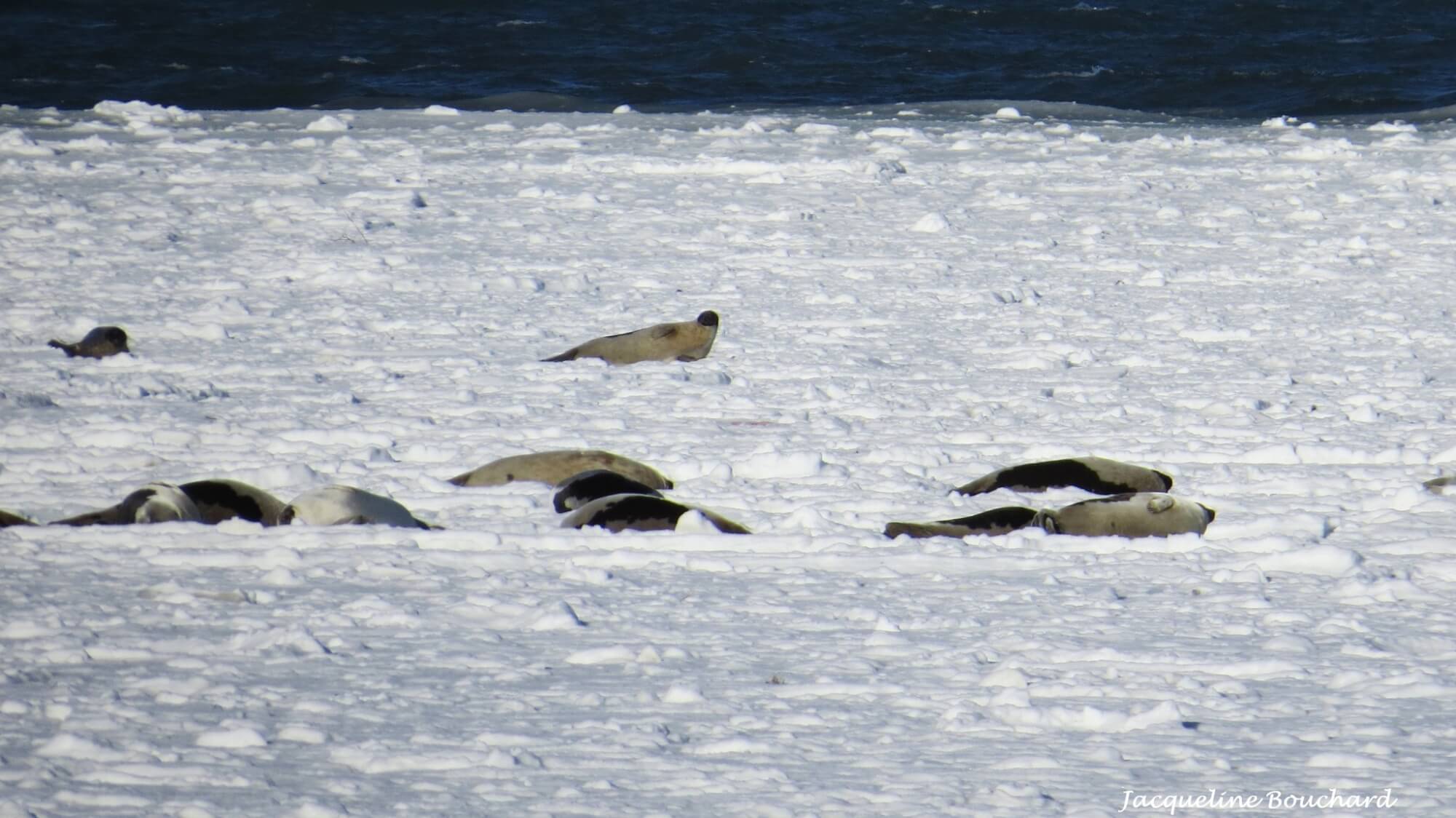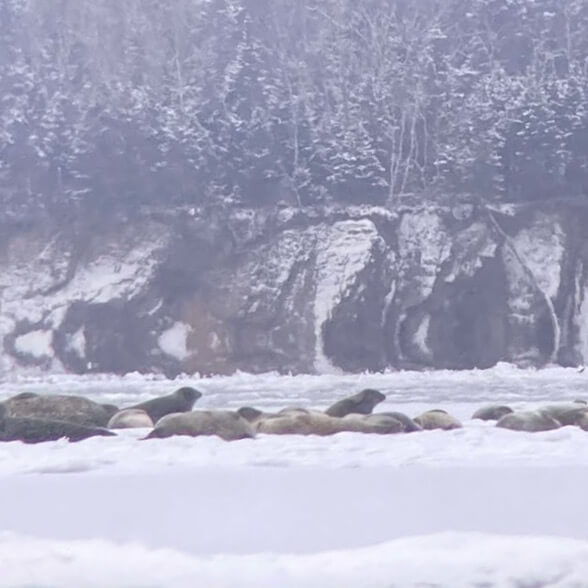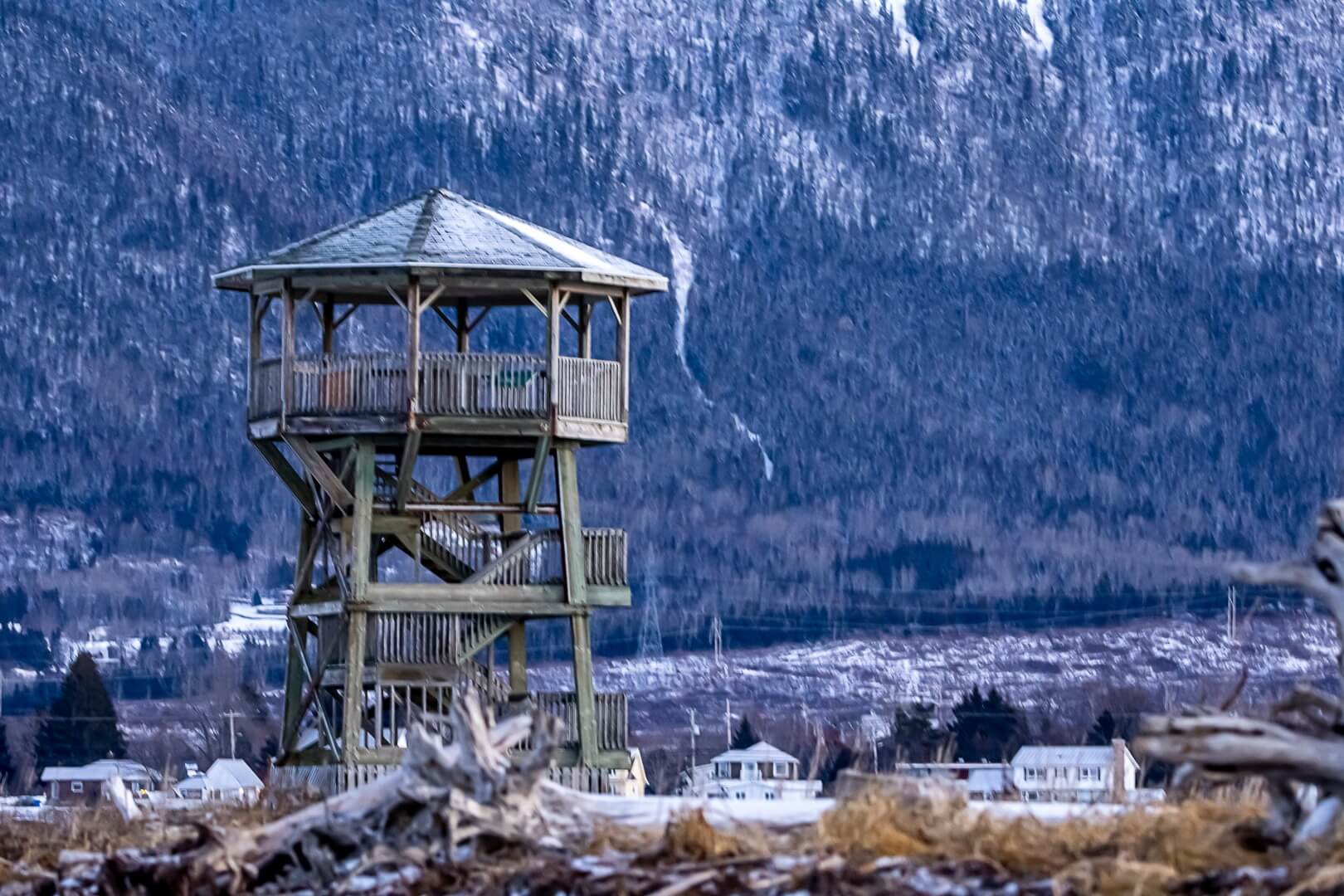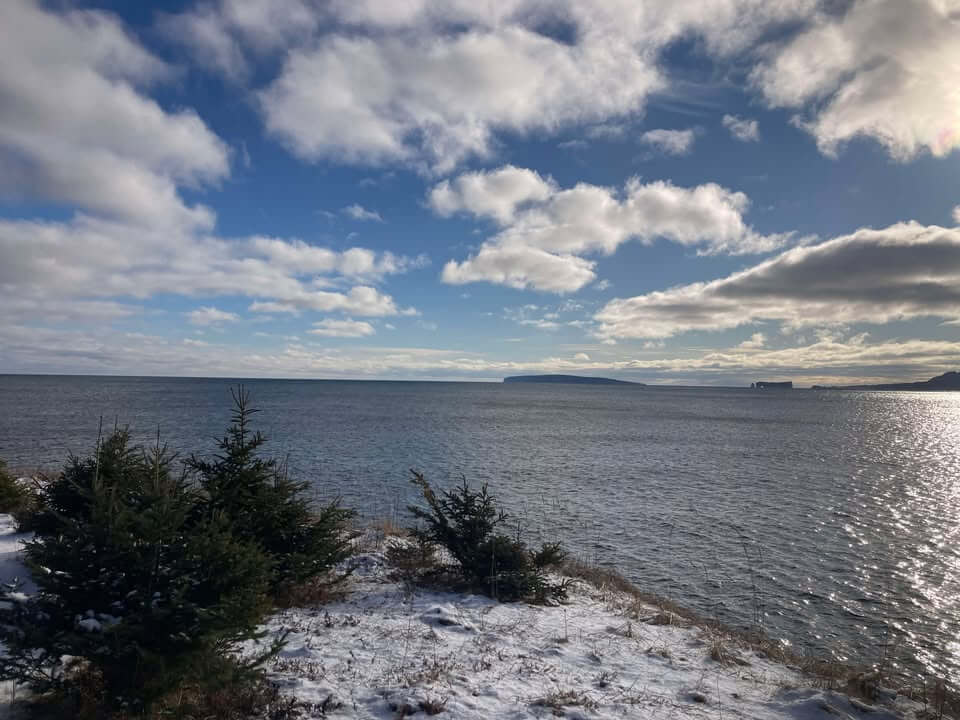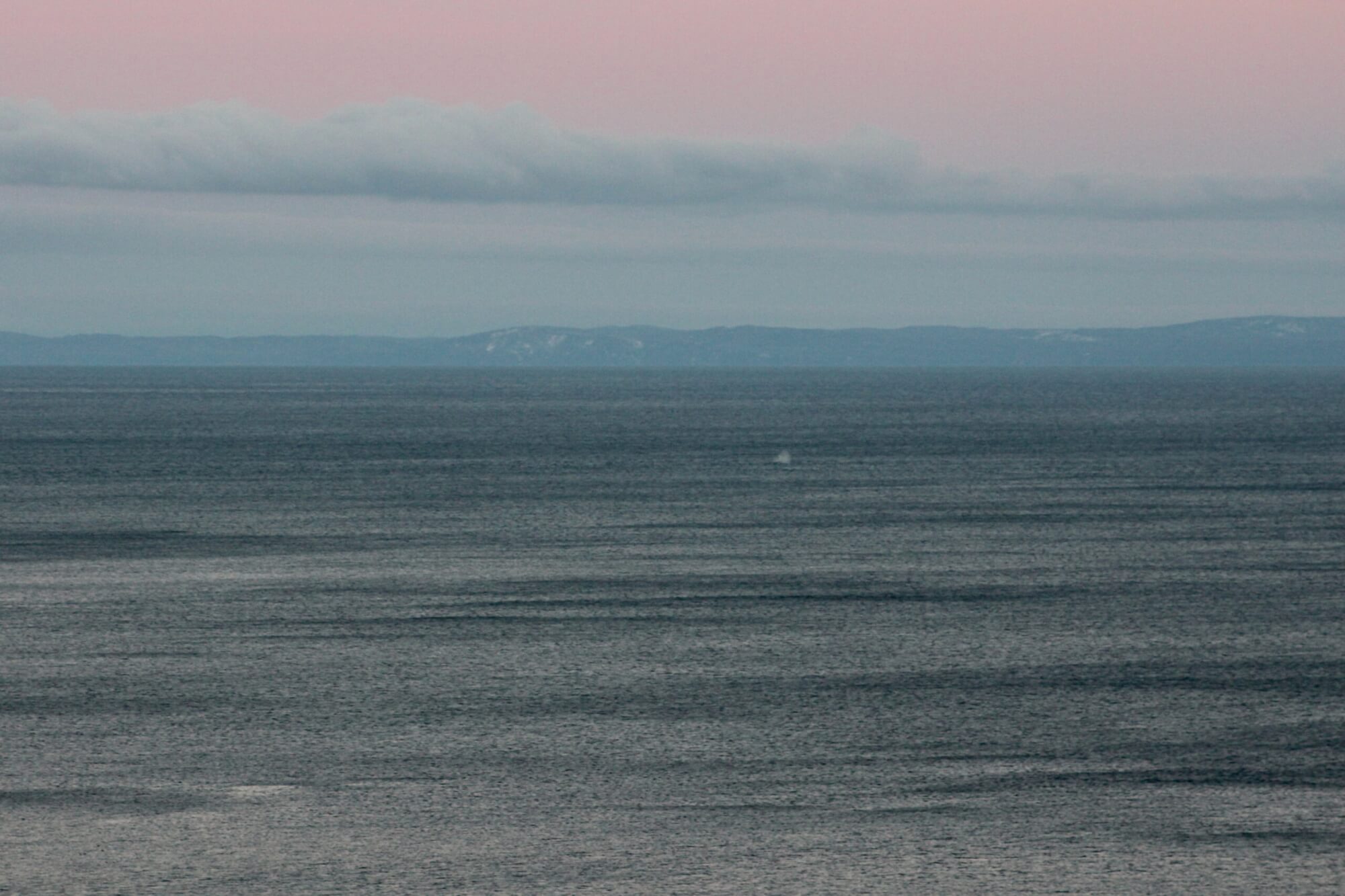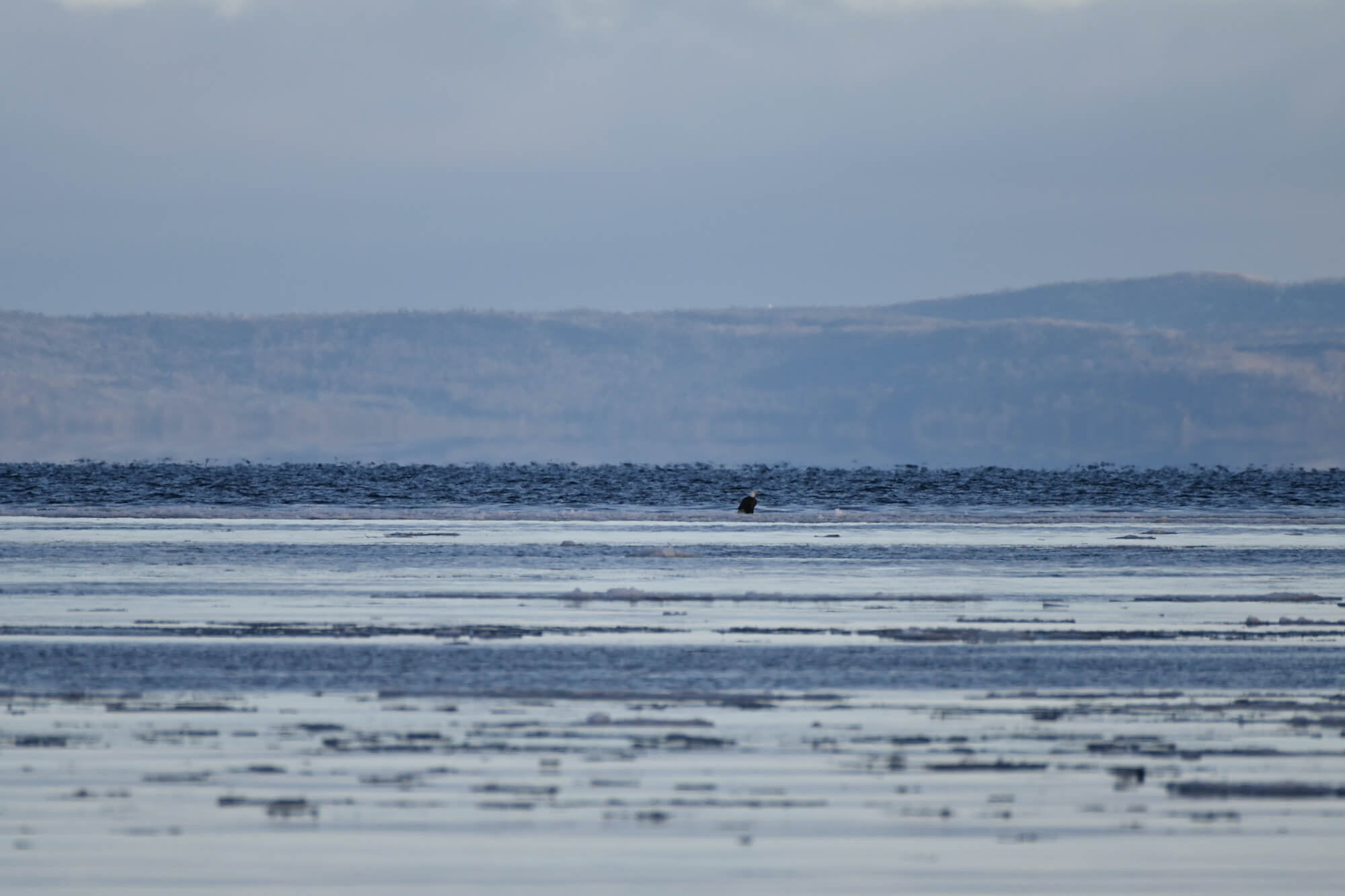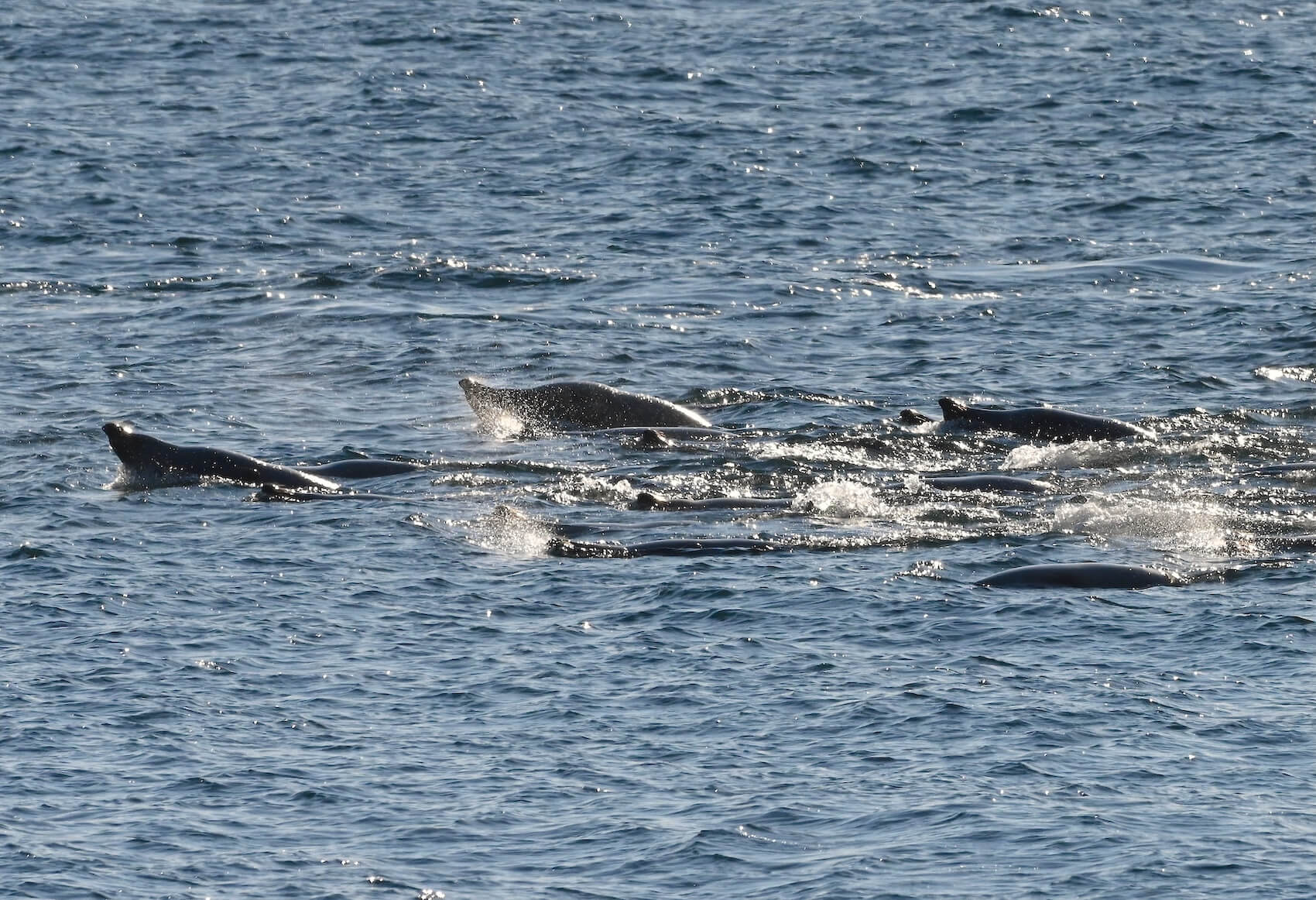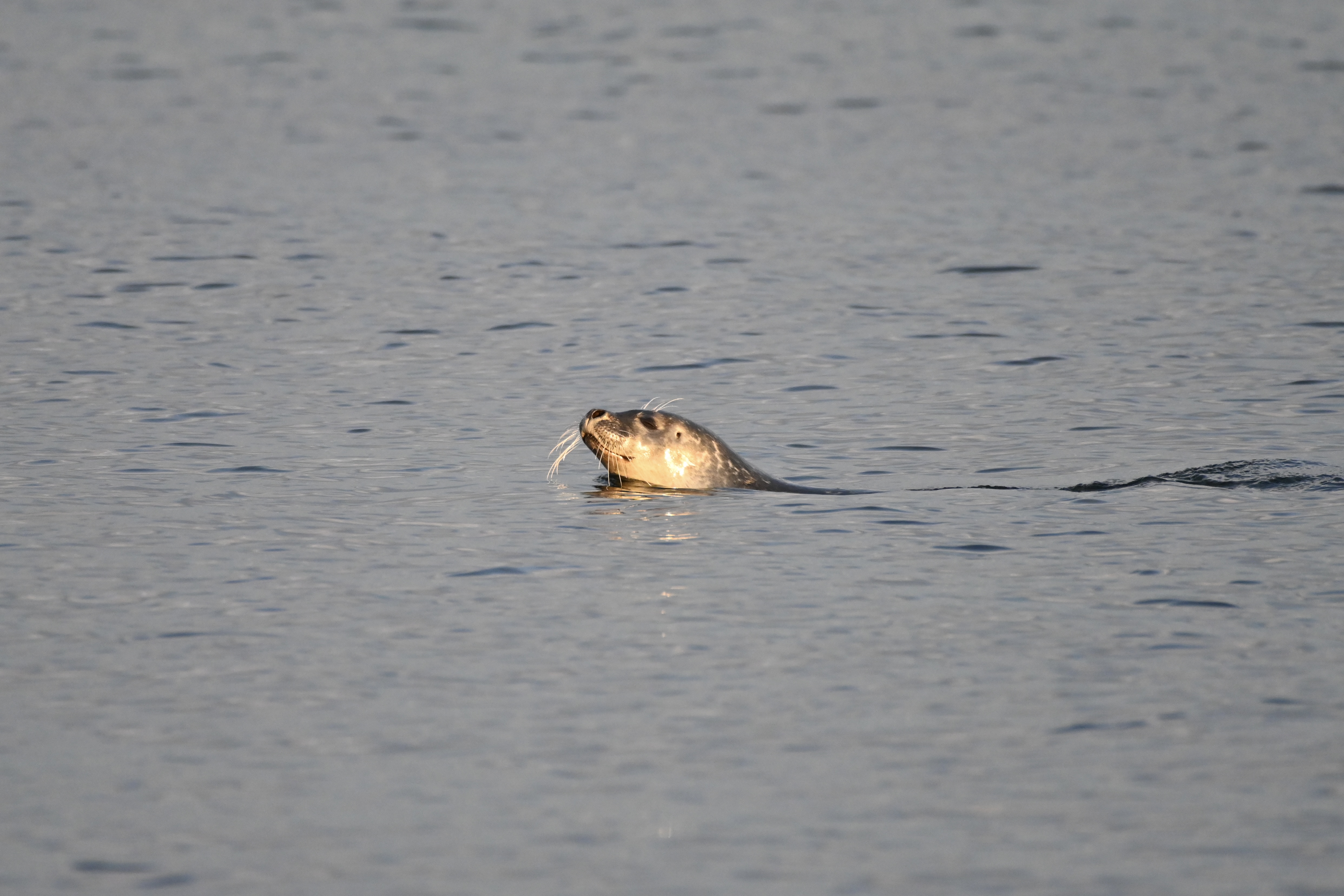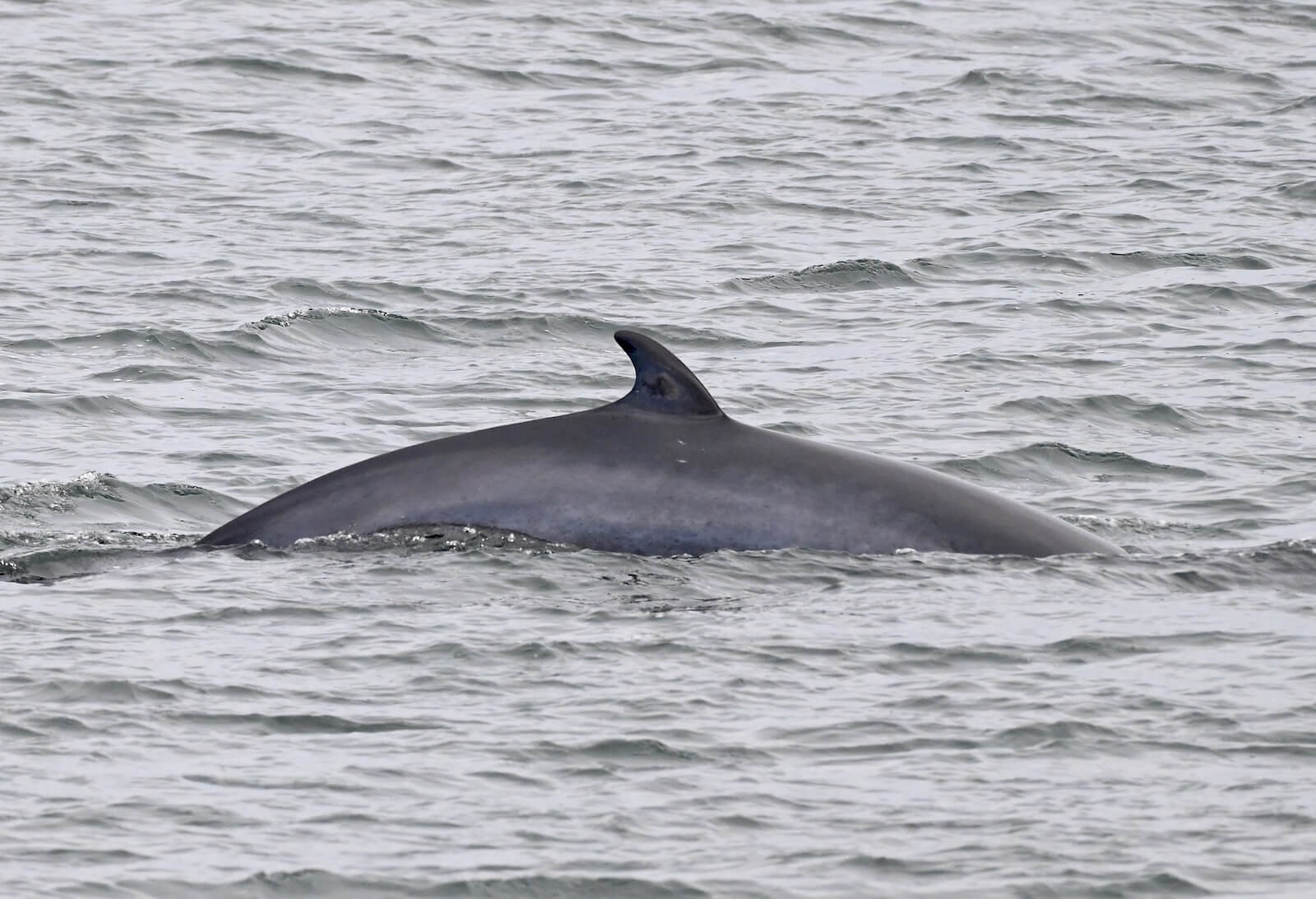Over the past week, harp seals seem to have invaded the Bas-Saint-Laurent and Gaspésie regions. Some were resting on shore, while others gathered in numbers on the ice a little farther out. From Rimouski to Carleton-sur-Mer and Gaspé, this winter visitor to the St. Lawrence has gotten people talking!
Omnipresent seals
In Sainte-Flavie, one resident came across several seals during a stroll near the shoreline. From the wheel of his vehicle, another observer reports seeing thousands of these animals on his drive from Rimouski to Gaspé! “Harp seals have settled on the thin ice near Sandy Beach, sheltered from the waves and wind. There are nearly 200 of them,” explains a woman from the Gaspé Peninsula. And the sightings just keep pouring in! On January 15, a wildlife photographer headed out in search of a snowy owl near the Carleton wharf. To her great surprise, she came across a seal. “A rather exceptional encounter,” she describes.
Adult harp seals are primarily recognizable by their white colour with a black harp-shaped band across their backs, hence the species’ name. Females do not always show this colour pattern, however. Every year between late February and early March, female harp seals gather by the thousands to give birth to their pups (article in French) on the ice floes. However, declining ice cover in recent years has been pushing them to the coasts of Newfoundland and Labrador.
Despite the temptation to observe these creatures close up, it is always important to remember that these are wild animals. A distance of at least 50 metres should be maintained from seals to avoid causing them stress. If the seal has visible injuries, if it is in an awkward place for human activities or if you see other people disturbing or touching it, do not hesitate to contact the Quebec Marine Mammal Emergency Response Network at 1-877-722-5346. The best course of action will be determined by experts.
Large blows, humpback whale and a bald eagle
A number of large cetaceans have passed by Tadoussac. One enthusiast shares her observation: “There were three large spouts off the dunes yesterday! […] They were very active… They only dived for a few minutes, moved around a lot and at times I saw what might have been an indication of surface feeding (lots of foam just after the blow).” A harbour seal surprised two Côte-Nord residents during their lunch break when it surfaced in the Saguenay Fjord. On the other side of the St. Lawrence, a humpback whale apparently approached close to the coast at the entrance to Gaspé Bay. At Pointe-à-la-Croix in Les Escoumins, one bird brought a smile to the faces of a couple of observers. They claim that “a bald eagle thought it was a seal, drifting along on a chunk of ice offshore.” While it is common to see seals resting on the ice floes, this is indeed an unusual sighting!
Thanks to all our collaborators!
Special thanks go out to all our observers who share their love for marine mammals with us! Your encounters with cetaceans and pinnipeds are always a pleasure to read and discover.
On the water or from shore, it is your eyes that give life to this column.
Jacqueline Bouchard
Odélie Brouillette
Mahtieu Côté
Laetitia Desbordes
Julie Fresquet
Diane Ostiguy
Élizabeth Melis
Diane Ostiguy
Pascal Pitre
Sylvie Roy
Guillaume Savard
Andréanne Sylvain
Marielle Vanasse
And to all the others!
Additionally, we would like to acknowledge the following teams that also share their sightings:
Sept-Îles Research and Education Centre (CERSI)
Group for Research and Education on Marine Mammals (GREMM)
Marine Mammal Observation Network (MMON)
Quebec Marine Mammal Emergency Response Network (QMMERN)
Mingan Island Cetacean Study (MICS)
Would you also like to share your observations?
Have you seen any marine mammals in the St. Lawrence? Whether it’s a spout offshore or just a couple of seals, drop us a line and send your photos to [email protected]!


